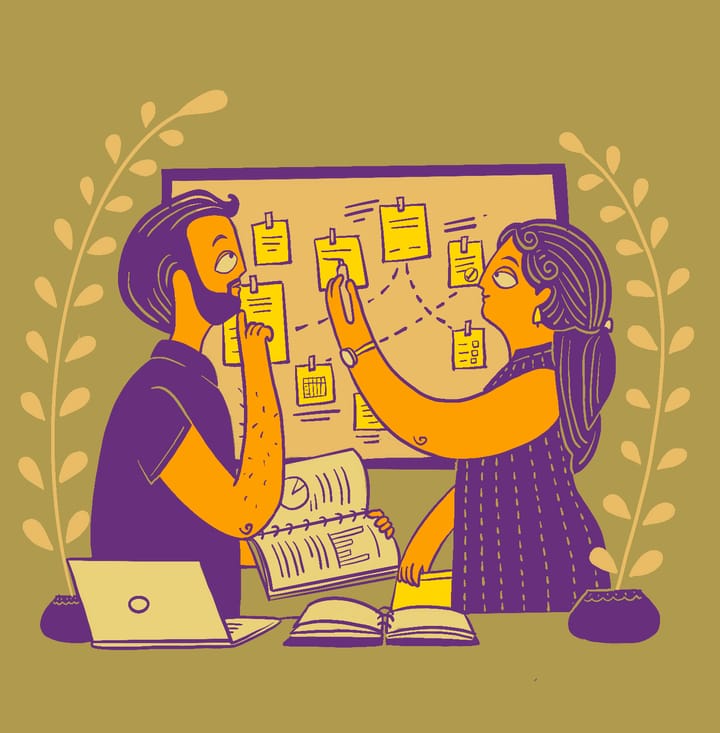A Guide to Calm, Mindful Leadership
Learn the powerful secrets of mentally calm leadership.

Successful leaders and executives are staunch believers in calm leadership. That’s because they know that the tone they set determines the results their teams yield.
Studies indicate that erratic actions and emotional volatility are among the main ways leaders accidentally stress their employees out. An employee looks to a leader for guidance, which makes it even more important for the latter to exude balance, calm and poise in even highly stressful situations. In this article, we will give you some tips to stay calm as a leader.
The Challenges of Calm Leadership in Turbulent Times
It is natural to feel overstimulated and overwhelmed in a leadership role. Such roles involve stressful responsibilities such as supervision, conflict management, communication and coordination, problem-solving and caring for the wellbeing of your team (to name a few).
The higher the stress, the more you need healthy coping strategies to regulate your emotions. ‘Leader meltdown’ is a real phenomenon. If you feel isolated at work, cannot trust your colleagues, struggle with decision making, or constantly feel tired or irritable; you could have leader meltdown. But we’ve got you covered. These tips to stay calm at work, recommended by successful leaders, can help you combat your stress.
Mindfulness techniques
Mindfulness is the ability to be fully present in each moment. It can be difficult to do so, when under stress and pressure. Mindfulness techniques such as the 3-3-3 technique or the 5-4-3-2-1 grounding technique are evidence-based practices that aid stress reduction, improve relationships, enhance clarity, and raise tolerance, emotional intelligence, and flexibility.
You can also practice mindful leadership which involves leading with focus, clarity, creativity, and compassion. An open attitude, empathy, resilience, and grounding can help you stimulate these qualities.
Regular self-care
Mental and physical well-being start with respecting and loving your own body and mind. Processing your feelings regularly, keeping track of your moods, thoughts, and patterns along with regular, healthy self-care routines are a good start. Yes, your self-care routine includes all the healthy things you love, including your food and sleep rituals.
Breathing exercises

The Harvard Business Review looked closely at three separate studies conducted by Yale, University of Arizona and by Sepalla et al. These uniformly highlighted that SKY (Sudarshan Kriya Yoga) breath meditation had a positive effect on multiple verticals of an individual’s life.
SKY breath meditation is a breath-based exercise practised through rhythmic, cyclic breathing patterns. It is an evidence-based technique and one of the most widely accepted tips to stay calm.
Patience and resolve
Leaders often want to solve problems quickly and at the first attempt. This isn’t always possible when it comes to complex business decisions. Accept the fact that some problems are tricky/messy and may need time to resolve. Try to reduce the problem to its core issues. Look for organisational or personal resources – e.g., the support of your colleagues or a mentor – that may help you. And each time you fix a small aspect of the problem, be sure to savour the accomplishment before getting back to work.
Pause, reflect, respond
Response, rather than reaction, speaks about a leader’s ability to stay calm under duress. As a leader, you are expected to have a well-thought-out plan that requires you to take a pause to think, decipher, reflect on, and execute an optimal plan of action. So pause what you are doing, reflect on your choices/possible resolutions by reframing your perspective, and only then respond by doing what is in the best interest of others and yourself.

Reach out for help
If your stress or anxiety levels remain high, you may need professional help. A good place to start is your company’s employee wellbeing programme, if it has one. Such programmes support employees with a range of mental health (e.g., counselling, support groups), physical health (fitness or health services, apps, etc.) and need-based (legal, financial, childcare, etc.) measures that can help you address the core source of your distress.
Some organisations may offer a full suite of wellbeing facilities; others might have a more ad-hoc approach. If your company does not offer any such programme, you can meet a psychologist or confide in a close friend or family member. The key is, don’t ignore the problem – talking to someone always helps.
Stress and it’s correlation with performance
Build yourself and your skills
Self-awareness is a common theme identifiable in all the tips mentioned in this list. Use SWOT analyses and SMART goals to recognise your shortcomings and develop your individual self. Use skill-development training and soft-skills to advance your skills and personality. Imbibe these learnings in all areas of life to master them.
Develop your emotional intelligence
Emotional intelligence is your ability to recognise and manage your emotions. Being aware of your emotions helps you control and manage them in a healthy manner as it becomes easy to identify triggers. These triggers act like your alarm, indicating that it is time for you to use your coping tools and techniques immediately. Mastering your emotional intelligence is one of the easiest tips to stay calm under pressure.
By applying the above tips for calm leadership consistently and committedly, you not only improve your own resilience and therefore mental health; you also set an example for your team in how to weather crises with equanimity, thoughtfulness, and grace.



